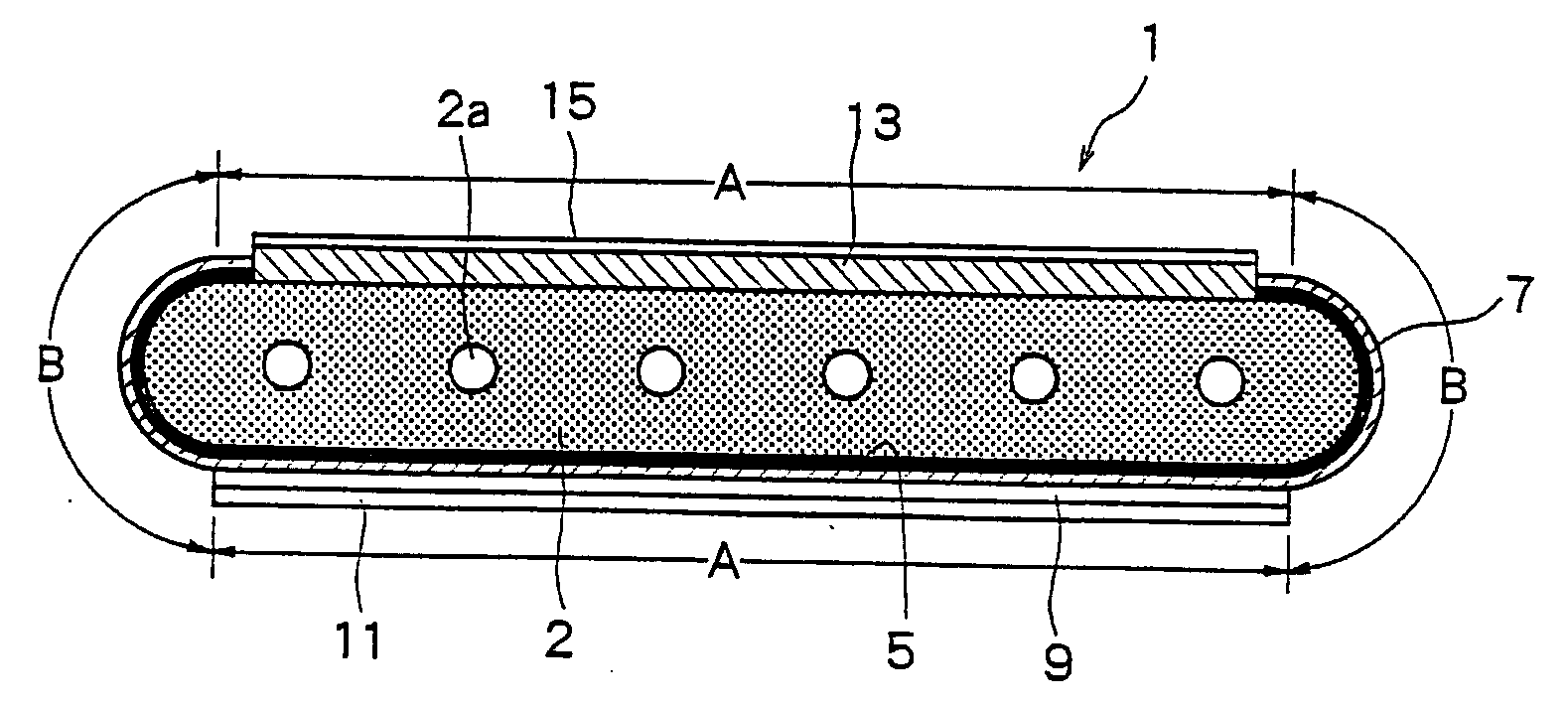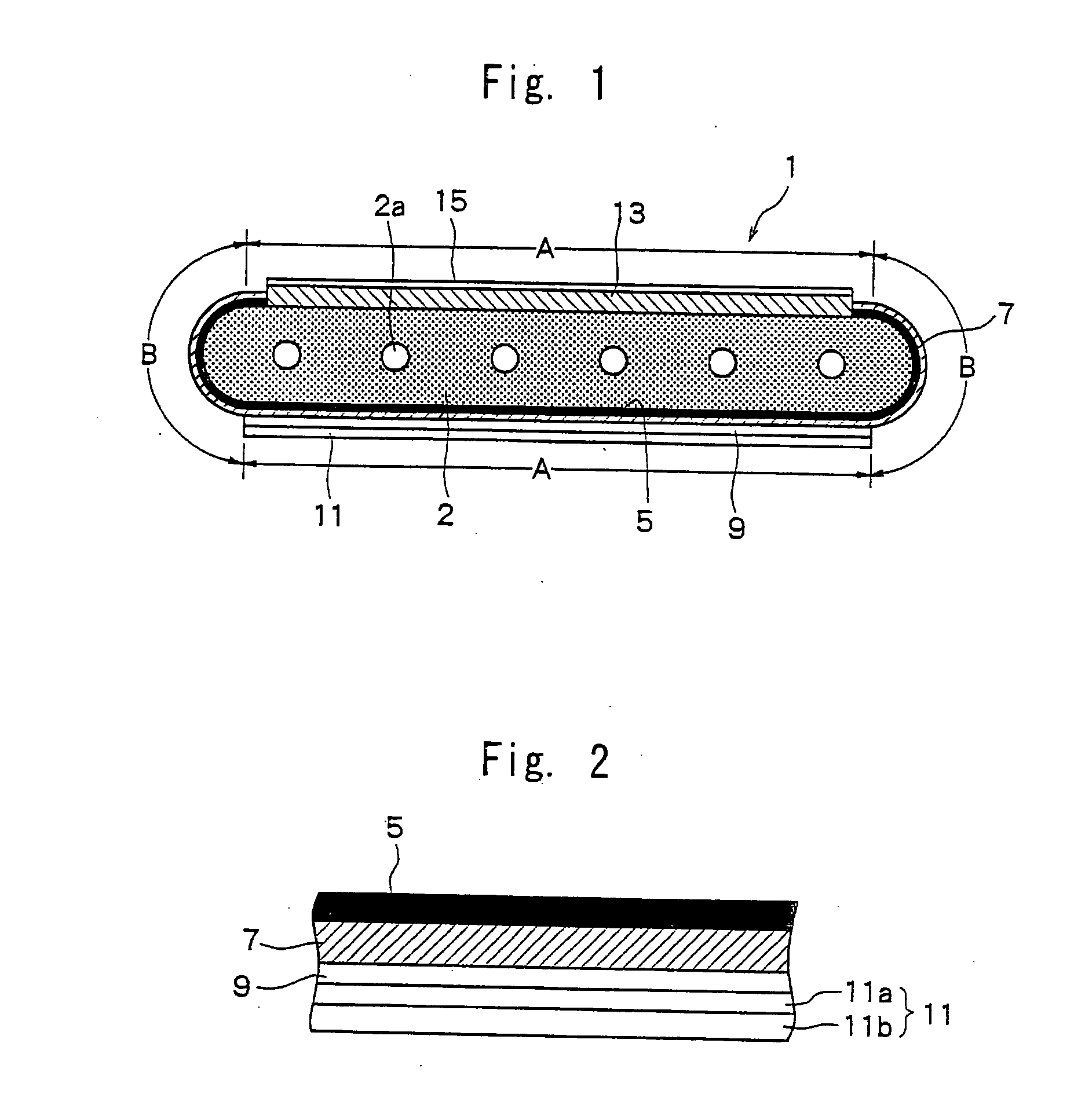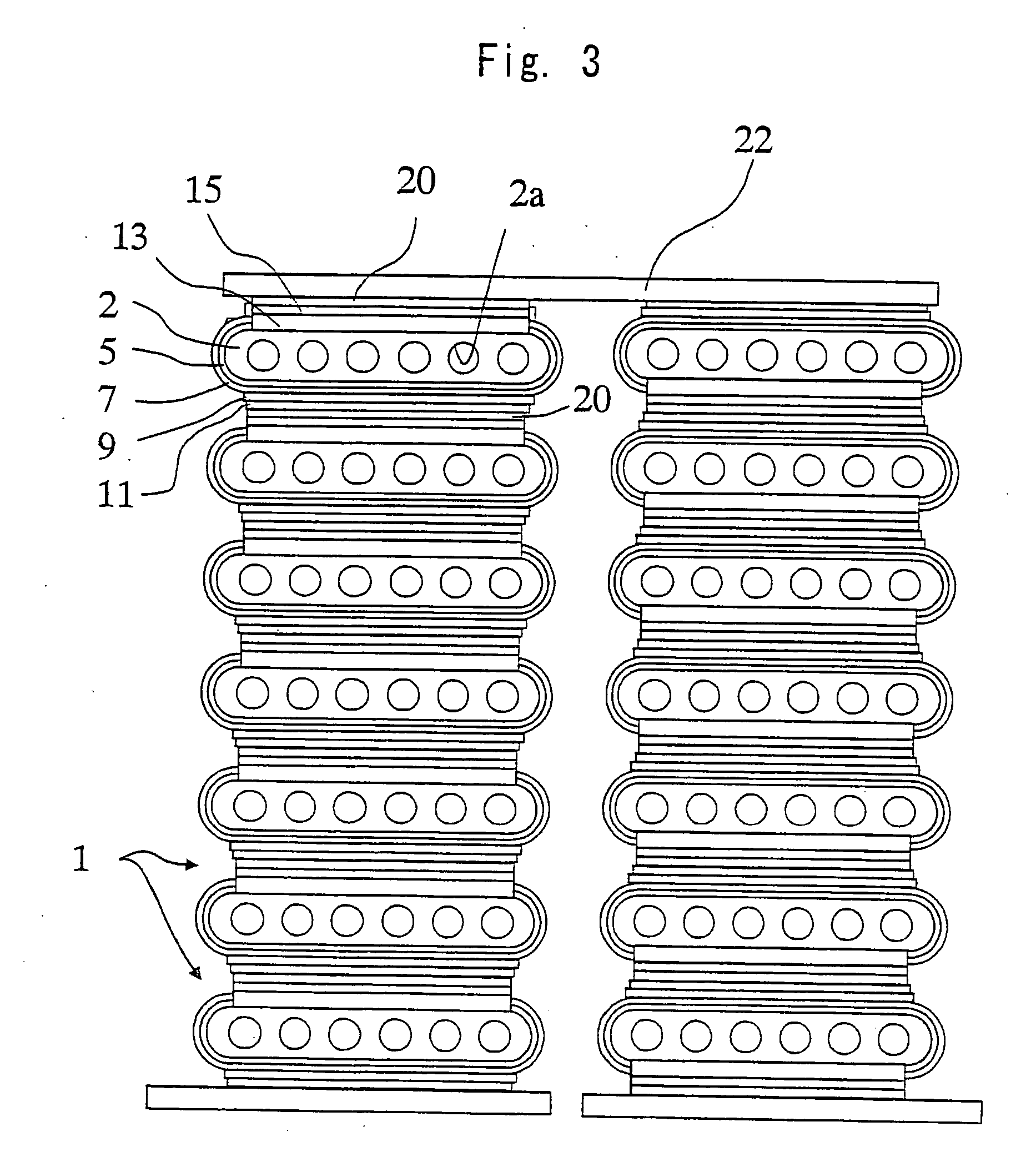Fuel cell
a fuel cell and solid electrolysis technology, applied in the manufacture of cell components, electrochemical generators, final product manufacturing, etc., can solve the problems of insufficient function of oxygen electrode layers and drop in fuel cell performance, and achieve the effect of reducing interfacial resistance and increasing junction strength
- Summary
- Abstract
- Description
- Claims
- Application Information
AI Technical Summary
Benefits of technology
Problems solved by technology
Method used
Image
Examples
example 1
[0110] First, an NiO powder having an average particle size of 0.5 μm and a Y2O3 powder having an average particle size of 0.9 μm were so mixed together that the volume ratio (NiO / Y2O3) after firing and reduction was 48 / 52, and to which were further added an organic binder and a solvent to prepare a slurry thereof. The slurry was molded by the extrusion-molding method, and was dried and dewaxed to prepare an electrode support substrate-forming article.
[0111] Next, an Ni powder having an average particle size of 0.5 μm, a ZrO2 powder in which a rare earth element (Y) has been solidly dissolved, an organic binder and a solvent were mixed together to prepare a slurry. The slurry was applied onto the electrode support substrate-forming article prepared above by a screen-printing method and was dried to form a coated layer for forming the fuel electrode layer.
[0112] Further, the ZrO2 powder in which scandium has been solidly dissolved in an amount of 8 mol %, an organic binder and a so...
PUM
| Property | Measurement | Unit |
|---|---|---|
| temperature | aaaaa | aaaaa |
| temperature | aaaaa | aaaaa |
| open porosity | aaaaa | aaaaa |
Abstract
Description
Claims
Application Information
 Login to View More
Login to View More - R&D
- Intellectual Property
- Life Sciences
- Materials
- Tech Scout
- Unparalleled Data Quality
- Higher Quality Content
- 60% Fewer Hallucinations
Browse by: Latest US Patents, China's latest patents, Technical Efficacy Thesaurus, Application Domain, Technology Topic, Popular Technical Reports.
© 2025 PatSnap. All rights reserved.Legal|Privacy policy|Modern Slavery Act Transparency Statement|Sitemap|About US| Contact US: help@patsnap.com



